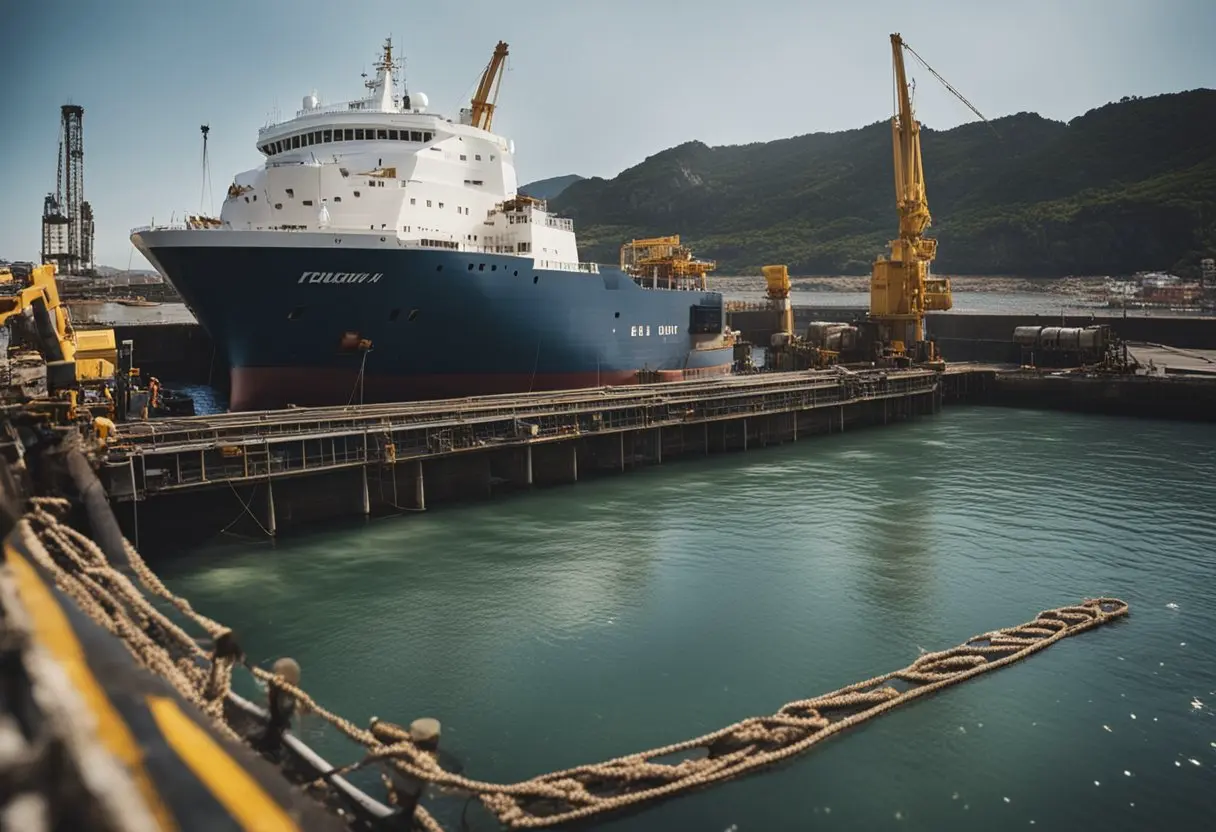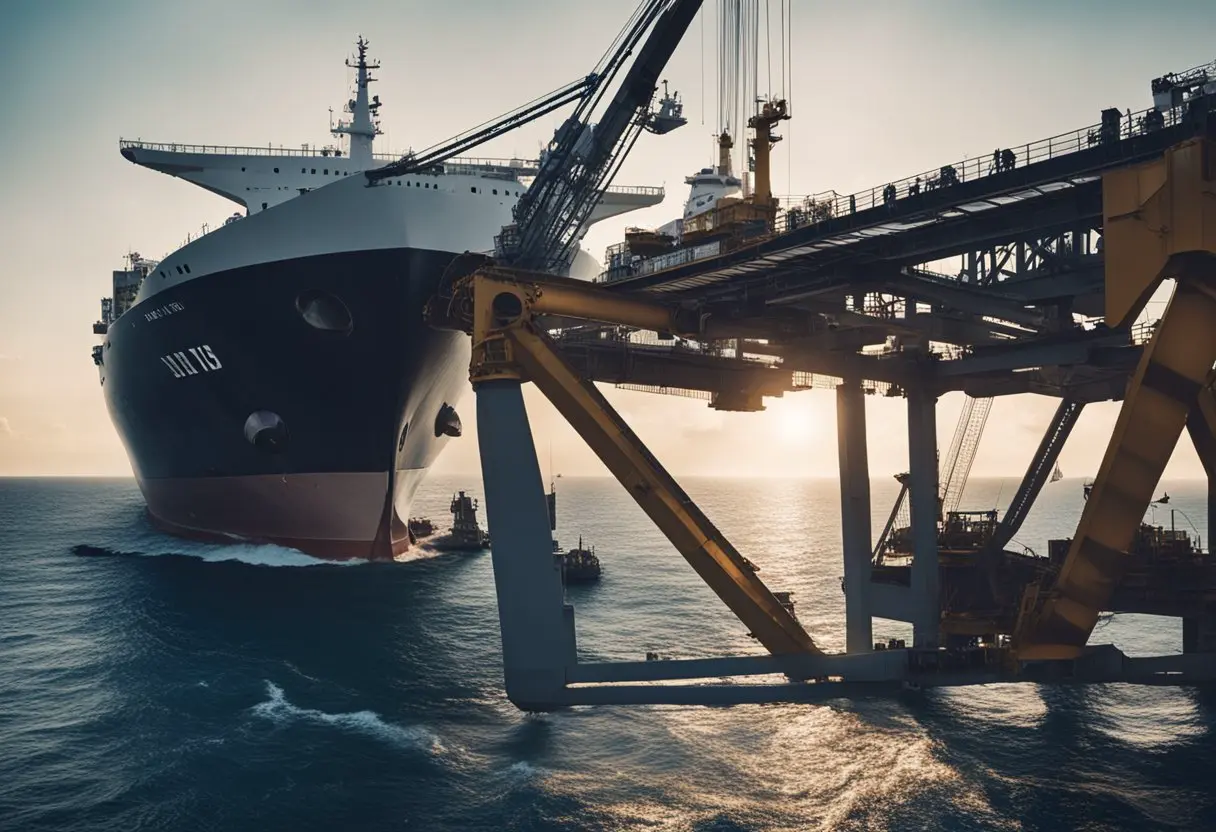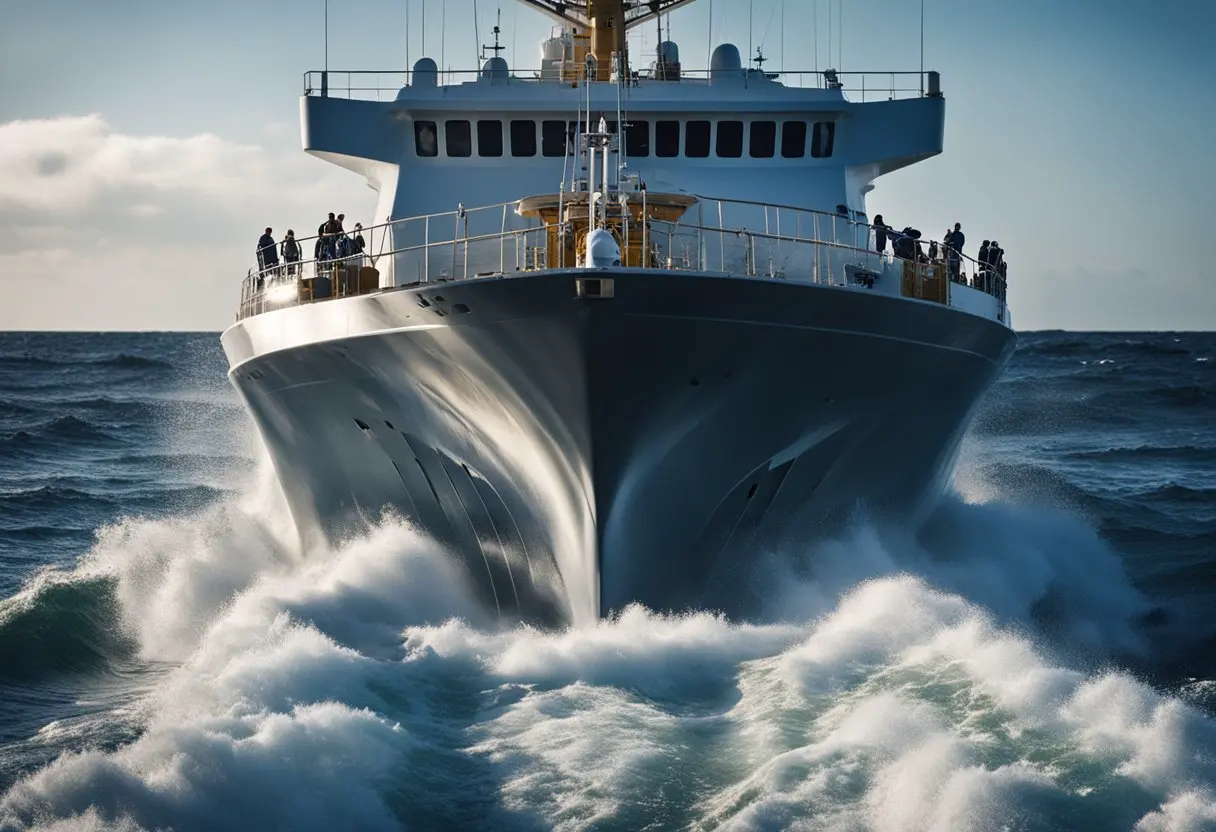How Ships are Launched at Sea: Cargo Ships have been used for transportation and trade for centuries, and the process of launching a ship into the sea has evolved over time. Ship launching is an important event in the life of a shipyard and its workers, and it requires careful planning and execution to ensure the safety of the ship and its crew.
There are several methods of launching a ship into the sea, each with its advantages and disadvantages. The most common method is the end-on launch, in which the ship slides down an inclined slipway, usually stern first. Another method is the side launch, in which the ship enters the water broadside. Additionally, there are other methods like gravitational launching, floating-out launching, mechanical launching, and airbag launching. Each of these methods has its own set of advantages and disadvantages, and the choice of method depends on factors such as the size and shape of the ship, the location of the shipyard, and the budget.
Historical Context of Ship Launching

Ship launching has a rich historical context that spans centuries. The evolution of ship-launching methods and the cultural significance of ship-launching ceremonies have been influenced by various factors such as technological advancements, cultural practices, and religious beliefs.
Evolution of Ship Launching Methods
The oldest and most widely used method of ship launching is the end-on launch. This method involves the vessel sliding down an inclined slipway, usually stern first. The side launch method, on the other hand, involves the ship entering the water broadside. The third method of ship launching is the float-out method, which involves flooding the dry dock and allowing the ship to float out.
Over time, ship-launching methods have evolved to include more complex and innovative techniques. For example, the airbag launching method involves inflating airbags beneath the ship to lift it off the blocks and onto the water. The hydraulic launching method involves using hydraulic jacks to lift the ship off the blocks and onto the water.
Cultural Significance of Ship Launching Ceremonies
Ship launching ceremonies have cultural significance in many parts of the world. In ancient times, ship-launching ceremonies were often accompanied by religious rituals and sacrifices to appease the gods and ensure a safe voyage. In modern times, ship launching ceremonies are more ceremonial and are used to mark the completion of a ship’s construction.
Ship launching ceremonies often involve breaking a bottle of champagne against the hull of the ship. This tradition is said to have originated in the 19th century when the wife of a shipbuilder christened a ship with a bottle of champagne to bring good luck. Other ship launching traditions include the naming of the ship and the hoisting of flags.
In conclusion, ship launching has a rich historical context that is influenced by various factors such as technological advancements and cultural practices. The evolution of ship launching methods and the cultural significance of ship launching ceremonies have contributed to the development of the shipbuilding industry.
Preparation for Ship Launch
Before a ship can be launched at sea, several important steps must be taken to ensure a successful and safe launch. These steps include construction and dry docking, safety checks and regulations, and final inspections.
Construction and Dry Docking
The first step in preparing a ship for launch is the construction process. This involves building the ship and ensuring that it is structurally sound and seaworthy. Once the ship is built, it is moved to a dry dock for final preparations. During this time, the ship is inspected and any necessary repairs are made. The dry dock also allows for installing any necessary equipment and systems, such as propulsion, navigation, and communication systems.
Safety Checks and Regulations
Before a ship can be launched, it must undergo a series of safety checks and adhere to various regulations. These checks include ensuring that the ship’s stability and buoyancy are adequate, that all safety equipment is in place and functioning properly, and that the ship’s crew has received the necessary training and certifications. The ship must also comply with international regulations, such as the International Convention for the Safety of Life at Sea (SOLAS), which sets standards for safety equipment, fire protection, and emergency procedures.
Final Inspections
The final step in preparing a ship for launch is a series of inspections to ensure that everything is in order. These inspections include a final check of the ship’s stability and buoyancy, as well as a review of all safety equipment and procedures. The ship’s crew will also conduct a final inspection to ensure that all equipment and systems are working properly and that the ship is ready for launch.
Overall, the preparation process for launching a ship at sea is a complex and rigorous one that requires careful planning, attention to detail, and adherence to strict regulations. By following these steps, shipbuilders can ensure that their vessels are safe, seaworthy, and ready for the open sea.
Ship Launching Methods

There are several methods of launching a ship at sea, including gravitational slide, floating-out procedure, and mechanical systems.
Gravitational Slide
Gravitational slide is the most traditional method of launching a ship. It involves building the ship on a slipway, which is then lubricated with grease or oil. The ship is then released down the slipway by gravity and slides into the water. This method is simple and cost-effective, but it requires a large slipway and can be dangerous if not executed properly.
Floating-Out Procedure
The floating-out procedure involves building the ship in a dry dock, which is then flooded with water. As the water level rises, the ship gradually floats out of the dock and into the water. This method is commonly used for smaller ships and is less risky than the gravitational slide method.
Mechanical Systems
Mechanical systems are becoming increasingly popular for launching ships. These systems use hydraulic jacks or winches to lift the ship off its supports and lower it into the water. This method is more precise than the other two methods and allows for greater control over the launch process. However, it is also more expensive and requires specialized equipment.
Overall, the method of launching a ship at sea depends on several factors, including the size and type of the ship, the location, and the available resources. Each method has its advantages and disadvantages, and shipbuilders must carefully consider these factors when choosing a method for launching their vessels.
Post-Launch Procedures
After the ship is launched at sea, it undergoes several post-launch procedures to ensure it is seaworthy and ready for use. These procedures include stabilization and testing, fitting-out, and equipping.
Stabilization and Testing
Once the ship is in the water, it must be stabilized to ensure it is level and balanced. This is done by adding ballast to the ship’s tanks until it reaches its desired draft. The draft is the depth of the ship’s keel below the waterline. The ship’s stability is tested by conducting a series of sea trials. During these trials, the ship’s speed, maneuverability, and other performance characteristics are tested to ensure they meet the design specifications.
Fitting-Out and Equipping
After the ship has been stabilized and tested, it undergoes fitting-out and equipping. This involves completing the interior spaces, installing the propulsion system, and fitting the ship with all necessary equipment and machinery. The ship is also outfitted with communication and navigation systems, safety equipment, and other essential systems.
During the fitting-out process, the ship’s crew is trained on how to operate the ship’s equipment and systems. Once the ship has been fully equipped, it undergoes a final inspection to ensure it meets all safety and regulatory requirements.
In conclusion, the post-launch procedures are crucial to ensure that the ship is seaworthy and ready for use. The stabilization and testing process ensures that the ship is stable and performs as designed, while the fitting-out and equipping process ensures that the ship is fully equipped and ready for operation.
Environmental Considerations

Impact Assessment
Ship launching at sea can have significant environmental effects. The noise and light pollution caused by the process can disturb marine life, including whales and dolphins. The transfer of invasive species can also occur during the launch, leading to negative impacts on local ecosystems. In addition, ship launching can result in oil, atmospheric, and debris pollution, which can harm marine life and damage the environment.
Mitigation Strategies
To minimize the negative environmental impacts of ship launching, various mitigation strategies are employed. Before the launch, an environmental impact assessment (EIA) is conducted to identify potential impacts and develop appropriate mitigation measures. The EIA considers factors such as noise, light, and vibration levels, as well as the potential for oil spills and other forms of pollution.
During the launch, measures such as acoustic curtains and bubble curtains can be used to reduce noise levels and protect marine life. Additionally, oil booms and other containment measures can be deployed to prevent oil spills and other forms of pollution. After the launch, cleanup efforts are undertaken to minimize any environmental damage that may have occurred.
Overall, while ship launching at sea can have significant environmental impacts, the implementation of appropriate mitigation measures can help minimize these effects.
Challenges and Considerations During Ship Launching
Launching a ship at sea is a complex and challenging process that requires careful planning and execution. Several factors must be taken into consideration to ensure a successful launch.
Technical Difficulties
One of the main challenges in launching a ship at sea is the technical difficulties involved. The ship must be properly aligned and balanced to prevent it from capsizing during launch. Additionally, the launch process must be carefully timed to ensure that the ship does not collide with other vessels or structures in the area.
Weather Constraints
Weather conditions can also pose a significant challenge when launching a ship at sea. High winds and rough seas can make it difficult to properly align and balance the ship, and can also increase the risk of the ship capsizing during launch. As a result, launches are often delayed or postponed until weather conditions improve.
Logistical Issues
Finally, several logistical issues must be taken into consideration when launching a ship at sea. The launch site must be carefully chosen to ensure that there is enough space for the ship to maneuver and that there are no obstacles in the way. Additionally, the launch crew must be properly trained and equipped to handle the launch process, and all necessary equipment and materials must be on hand and in good working order.
In summary, launching a ship at sea is a complex process that requires careful planning and execution. Technical difficulties, weather constraints, and logistical issues must all be taken into consideration to ensure a successful launch.
FAQs About How Ships are Launched at Sea
What are the common methods used for launching ships?
There are three principal methods of conveying a new ship from the building site to the water, only two of which are called “launching.” The oldest, most familiar, and most widely used is the end-on launch, in which the vessel slides down an inclined slipway, usually stern first. With the side launch, the ship enters the water broadside. The airbag launching technique involves rolling a ship on airbags.
What is the process involved in side launching a ship?
Side launching involves sliding the ship down a slipway sideways into the water. The slipway is made up of a pair of parallel rails, and the ship is built on a cradle that can be moved along the rails. Once the ship is on the cradle, it is pushed along the rails and then launched into the water.
How does the airbag ship launching technique work?
In the airbag launching technique, a series of airbags are placed under the ship’s hull. The airbags are inflated to lift the ship and then rolled on a track into the water. The process is quick and easy, and it is particularly useful for launching ships in shallow waters.
What safety considerations are taken during a ship launch?
Safety is a top priority during a ship launch. The shipyard crew must ensure that the ship is balanced and stable on the cradle before the launch. They must also make sure that the slipway is clear of any obstacles, and that the ship is launched at the right speed and angle to prevent damage.
At what construction phase is a ship typically launched?
Ships are typically launched when they are about 80% complete. At this stage, the ship is structurally complete, and the remaining work can be carried out while the ship is afloat.
Related Posts:
